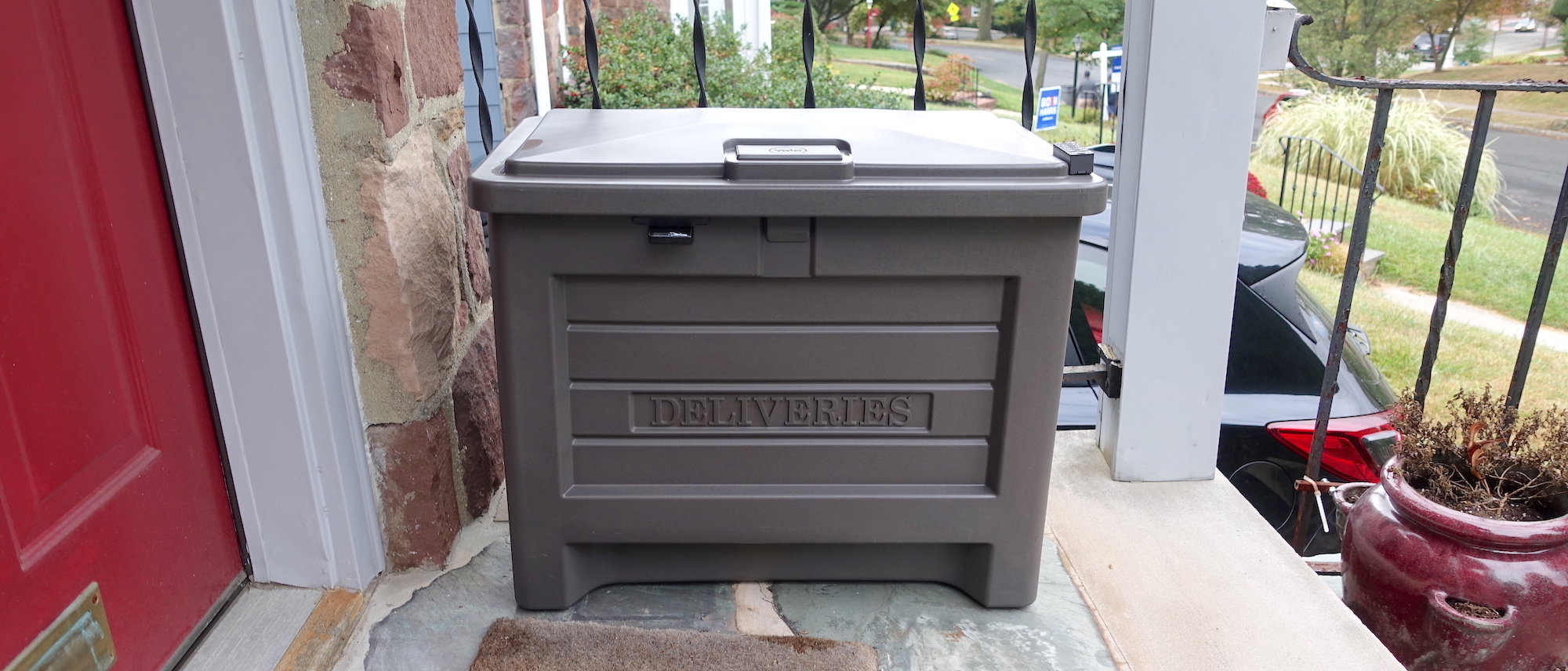Tom's Guide Verdict
The Yale Smart Delivery Box provides a secure place on your porch to drop off packages, but its signage could be clearer.
Pros
- +
Protects packages from porch pirates
- +
Easy installation
- +
Simple to use
Cons
- -
Not very obvious to delivery people
Why you can trust Tom's Guide
Thanks to the coronavirus pandemic, people are getting packages delivered to their homes in record numbers. That’s a lot of tempting targets for porch pirates looking to swipe packages, especially since Amazon Key hasn’t exactly taken off. (Do I want FedEx walking into my house? No thanks).
Yale’s Smart Delivery Box is aimed at thwarting package thieves while eliminating the uneasiness of allowing a FedEx or UPS driver into your foyer or garage. And at $129, Yale’s solution is not overly expensive. But, as I discovered during testing for my Yale Smart Delivery Box review, its usefulness all depends on whether delivery drivers actually use it.
- Best smart locks
- See who's knocking with the best video doorbells
Yale Smart Delivery Box: Price and Availability
Size: 28 x 24 x 18 inches (outside); 23.2 x 19.75 x 13.5 inches (inside)
Wireless: Bluetooth
Power: Replaceable CR2 Battery (approx. 6-month battery life)
Works with: Alexa, Google Assistant, Apple HomeKit
The Yale Smart Delivery Box is available starting September 29. The Brighton model, which is a brownish gray, costs $229, while the Kent model, which is slightly larger and a lighter tan color, sells for $279.
The outside of the Brighton model measures 28 x 24 x 18 inches, while the inside is 23.2 x 19.75 x 13.5 inches. The Kent measures 28 x 24.6 x 19 inches.
Both models come with the box, the lock, and an August Wi-Fi Connect bridge, which lets you link the Bluetooth locks with your home network.
Optional accessories include a smart keypad ($50) and an insulated cooler ($20), the latter of which fits inside the delivery box, and will help keep colder items at temperature. An optional tether ($12.99) will also be available to keep people from walking off with the entire box.
Yale also sells the lock separately as the Yale Smart Cabinet Lock ($79; $129 with Wi-Fi Connect module). This version lets you install the lock inside cabinets and doors to keep children and others out, but otherwise works the same as the Smart Delivery Box.
Get instant access to breaking news, the hottest reviews, great deals and helpful tips.

Yale Smart Delivery Box: Design
Designed by Step2, the same company that makes those seemingly indestructible outdoor playsets for kids, the Yale Smart Delivery Box is a large bland plastic box that’s designed to be nondescript.
A large “Deliveries” is stamped into the front of the box, but I wish it were also imprinted on the lid, to make it more obvious to FedEx and UPS drivers.
Inside the box you’ll find a removable tray. Take out that tray, and you can place sand or bricks at the bottom to add some weight. The box itself weighs 20 pounds, but you can add up to 40 pounds of weight to help ensure a thief or the wind doesn’t make off with it. You can also tether the box, but you’ll have to drill a hole to do so. The box is made of moderately thick plastic so that you’d need a knife and a few minutes of effort to cut it open.
The locking mechanism itself is a small cube, not much larger than the USB charger that comes with iPhones. It’s powered by a CR2 battery, and connects to your phone or the August Wi-Fi Connect Bridge via Bluetooth. Yale says the battery should last about six months.
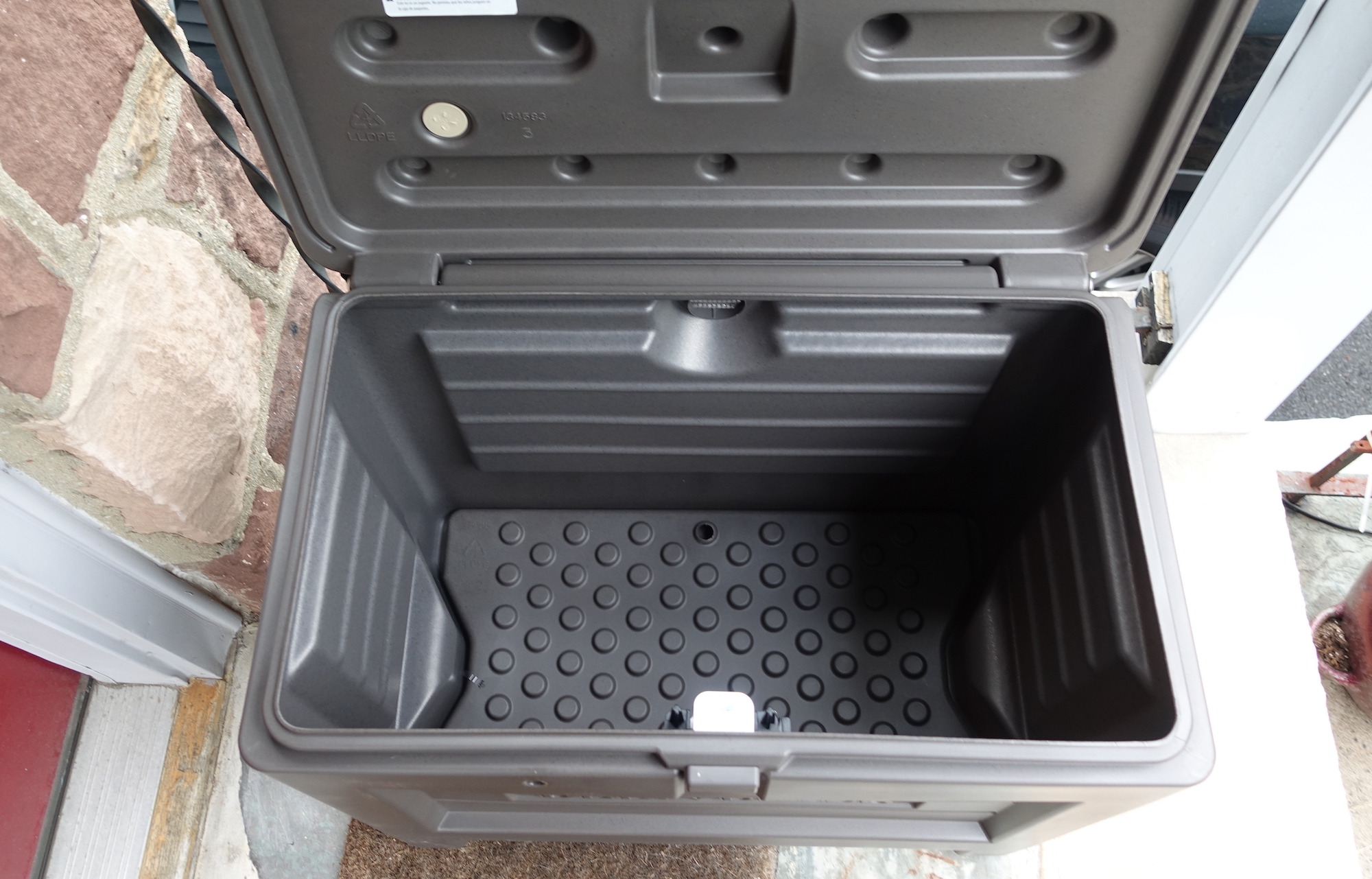
Yale Smart Delivery Box: How it works
After you set up the Yale Smart Delivery Box, you close its lid and set the lock to its unlocked state. The next time the lid is opened and closed, the lock will then engage, securing your packages inside. When you go and unlock the Smart Delivery Box and open the lid to remove the delivered package, the lock is designed not to re-lock after you close the lid. That way, the next delivery driver who comes along can open the now-empty box.
You can unlock the box in one of three ways: Using the Yale app (Android and iOS), with the optional keypad, or via Alexa or Google Assistant. (More on the smart home compatibility later.)
You can create around 250 codes for the keypad, so if you want to use the box as shared storage for you and your neighbors, you can assign them an individual key code.

Yale Smart Delivery Box: Performance
I placed the box to the immediate left side of my front door. From the time I installed it to this review (a period of three days), I only received one delivery from FedEx. The driver completely ignored the Yale Smart Delivery Box, and instead placed the packages on the opposite side of my front door. Hmmph.
I’m going to leave the box in the same place for the next week to see if any other deliveries make it in the box, and update this review accordingly. However, I wish there was more obvious signage on the box itself that it’s intended for packages.
Yale says that if you have a FedEx or UPS account, you can add a note that they should drop off packages inside the box.
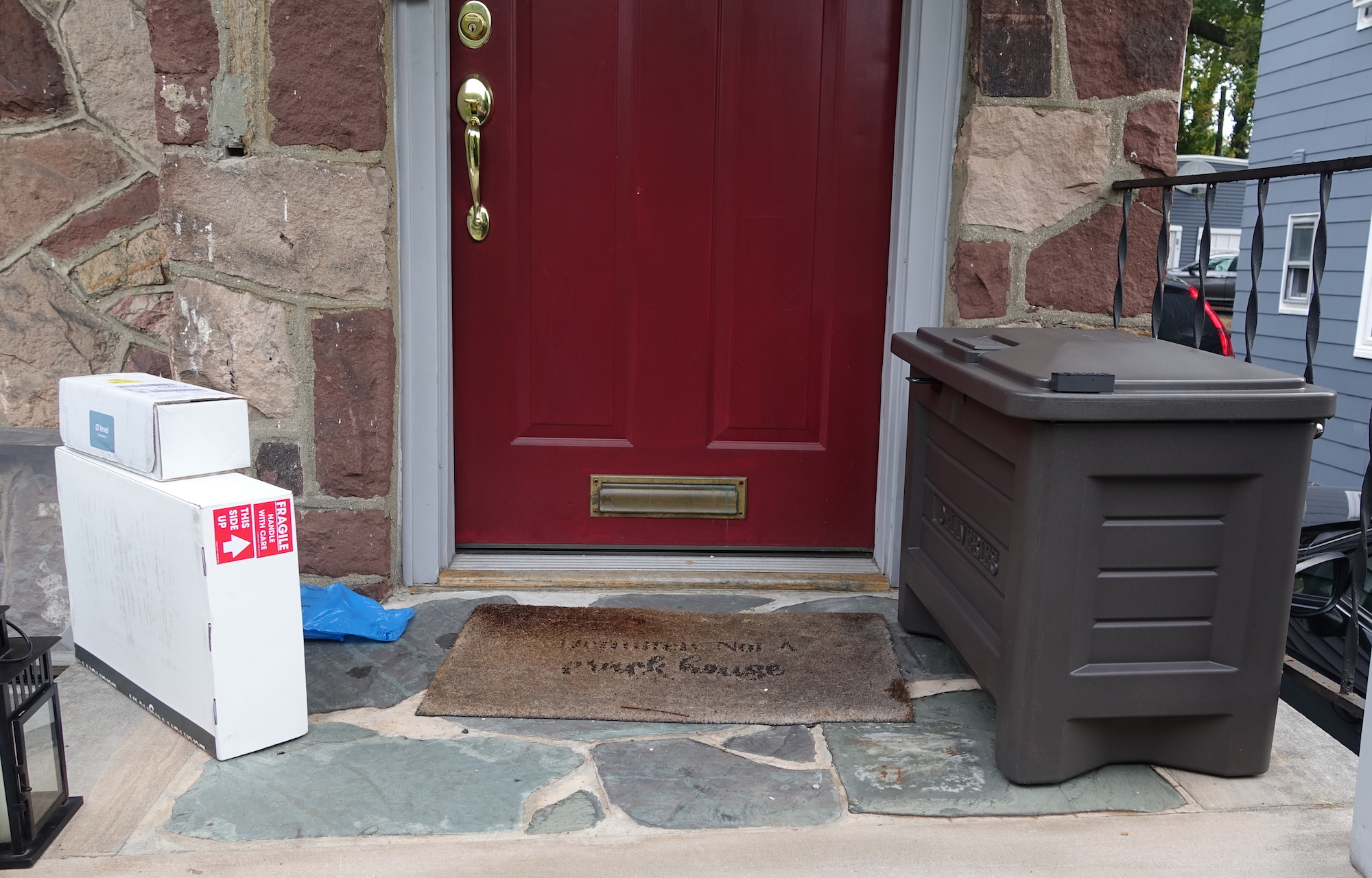
Yale Smart Delivery Box: Child safety
Towards the top back of the box is a small air vent, which helps keep moisture out and acts as a safety mechanism in case a small child decides to use it as a hiding spot.
Speaking of child safety, Yale also designed additional mechanisms to make sure that kids don’t get trapped in the box. The first is a latch on the outside of the lid; in order for the lid to close properly, the latch must be lifted, which can only be done from the outside of the box. The second safety mechanism is a glow-in-the-dark button on the lock itself; press this button, and the box will unlock. The outer latch is designed so that the lid can be lifted from the inside. I tried it—not stuffing myself into the box, mind you—and found that it opened easily.
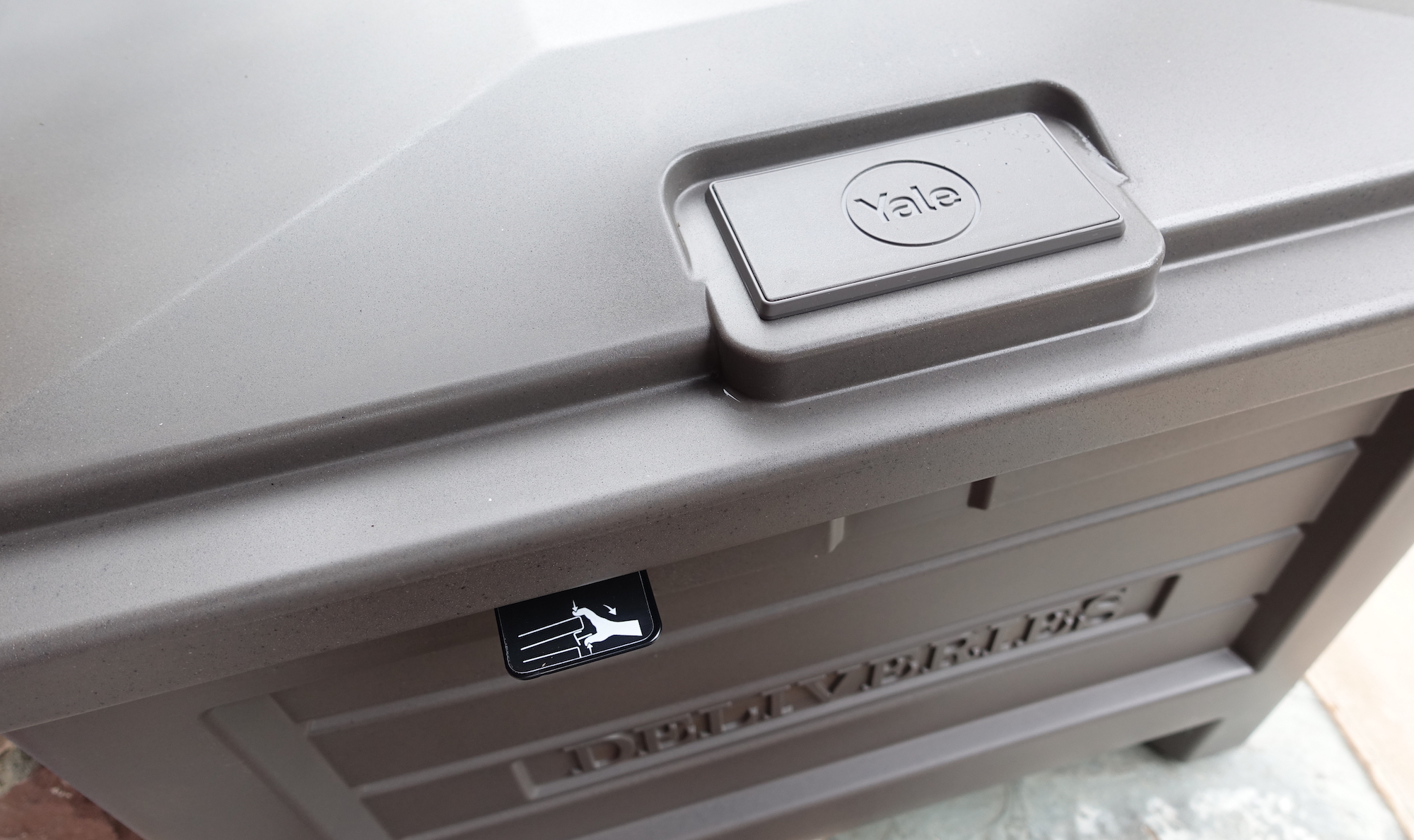
Yale Smart Delivery Box: Smart Home compatibility
Like its smart locks, Yale’s Smart Delivery Box works with Alexa, Google Home, and HomeKit. You can use any of those assistants to see if the box is locked, and to unlock the box with your voice. (You’ll need to provide the pin code, too.) It’s a requisite integration, but I don’t see myself calling out my pin code from my front porch. However, voice integration makes more sense when using Yale’s cabinet lock inside your home.
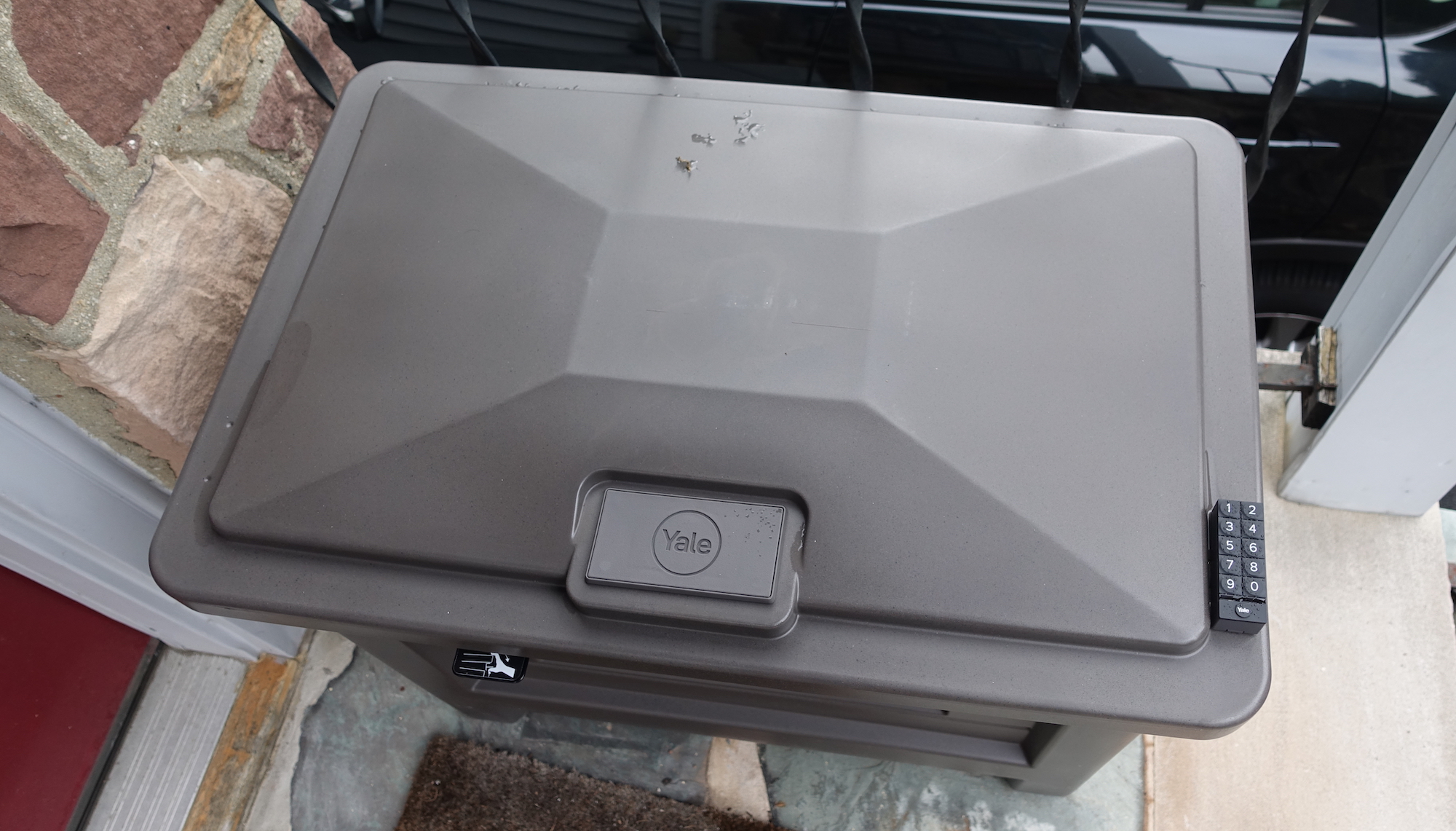
Yale Smart Delivery Box: Verdict
The Yale Smart Delivery Box is a good idea and is designed well, but you’re dependent on delivery drivers to spot the box, know what it’s for, and use it. My initial test did not go well, but I plan to leave it in place to see if other deliveries make it into the box, or just get left on my porch.

Michael A. Prospero is the U.S. Editor-in-Chief for Tom’s Guide. He oversees all evergreen content and oversees the Homes, Smart Home, and Fitness/Wearables categories for the site. In his spare time, he also tests out the latest drones, electric scooters, and smart home gadgets, such as video doorbells. Before his tenure at Tom's Guide, he was the Reviews Editor for Laptop Magazine, a reporter at Fast Company, the Times of Trenton, and, many eons back, an intern at George magazine. He received his undergraduate degree from Boston College, where he worked on the campus newspaper The Heights, and then attended the Columbia University school of Journalism. When he’s not testing out the latest running watch, electric scooter, or skiing or training for a marathon, he’s probably using the latest sous vide machine, smoker, or pizza oven, to the delight — or chagrin — of his family.
